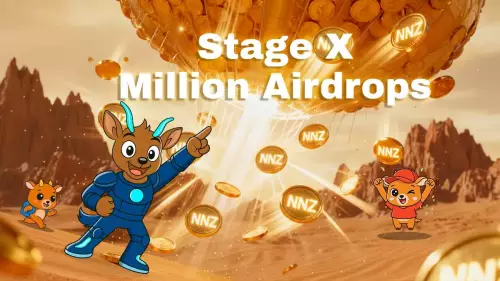 |
|
 |
|
 |
|
 |
|
 |
|
 |
|
 |
|
 |
|
 |
|
 |
|
 |
|
 |
|
 |
|
 |
|
 |
|
ブロックチェーン データ インデックス プラットフォームは、Web3 業界で最も重要であるにもかかわらず、ほとんど知られていないイノベーションの 1 つであり、開発者のリソースを解放し、分散型アプリケーションでのユーザー エクスペリエンスを劇的に向上させるのに役立ちます。

Blockchain data indexing platforms are one of the most consequential, yet largely unknown innovations in the Web3 industry. These platforms help to free up developers’ resources and dramatically improve the user experience in decentralized applications (dApps). Yet the vast majority of Web3 users don’t have the first clue about what a Web3 data indexing platform is, or does, or why it’s so important.
ブロックチェーン データ インデックス プラットフォームは、Web3 業界で最も重要なイノベーションの 1 つですが、ほとんど知られていません。これらのプラットフォームは、開発者のリソースを解放し、分散型アプリケーション (dApps) でのユーザー エクスペリエンスを劇的に向上させるのに役立ちます。しかし、Web3 ユーザーの大多数は、Web3 データ インデックス プラットフォームとは何か、その機能、あるいはなぜそれがそれほど重要なのかについて、まったく知りません。
To understand the importance of indexing, it might be helpful to think back to the early days of Web1, when the only way to find something online was to manually type the IP address of the website you want to visit into the URL bar. That changed when Google came along and indexed the web for the first time with its now-eponymous search engine
インデックス作成の重要性を理解するには、Web1 の初期の頃を思い出してみるとよいでしょう。当時、オンラインで何かを見つける唯一の方法は、アクセスしたい Web サイトの IP アドレスを URL バーに手動で入力することでした。 Google が登場し、その名を冠した検索エンジンで初めてウェブにインデックスを作成したときに状況が変わりました。
Now, indexing is going to have a similar impact in Web3 and the tangled web of blockchains that supports it.
さて、インデックス作成は、Web3 とそれをサポートする複雑に絡み合ったブロックチェーンの網にも同様の影響を与えることになります。
For developers, indexing is a godsend. Imagine you’re building a dApp and you need real-time access to blockchain data, user’s interactions and smart contract events. Finding all of this information on the blockchain, which stores data in a sequential way, is an extremely painstaking task.
開発者にとって、インデックス作成は天の恵みです。 dApp を構築していて、ブロックチェーン データ、ユーザーのインタラクション、スマート コントラクト イベントにリアルタイムでアクセスする必要があると想像してください。データが順次保存されているブロックチェーン上でこれらすべての情報を見つけるのは、非常に骨の折れる作業です。
The blockchain acts as a distributed database, serving as the backend of every dApp. It provides all of the data a smart contract needs to function, but the challenge lies in accessing this information. While searching for data within a specific block or an account is fairly simple, it quickly becomes much more complicated when developers need to aggregate data from multiple queries of single blocks
ブロックチェーンは分散データベースとして機能し、すべての dApp のバックエンドとして機能します。スマート コントラクトが機能するために必要なすべてのデータが提供されますが、課題はこの情報にアクセスすることにあります。特定のブロックまたはアカウント内のデータの検索は非常に簡単ですが、開発者が単一ブロックの複数のクエリからデータを集計する必要がある場合、すぐに非常に複雑になります。
The problem is the sequential nature of blockchain, where data is stored one block at a time. As the blockchain adds more and more data, it becomes longer, leaving the data within it scattered all over the place. It’s incredibly disorganized for anyone trying to search through that data and make sense of it, and so it takes a long time to retrieve that information. Yet the most advanced dApps of today require extremely large amounts of blockchain data processing logic and often need to do this for multiple chains at once.
問題は、データが一度に 1 ブロックずつ保存されるブロックチェーンの順次的な性質です。ブロックチェーンにデータが追加されると、ブロックチェーンは長くなり、ブロックチェーン内のデータはあちこちに散らばったままになります。そのデータを検索して理解しようとする人にとって、データは信じられないほど整理されていないため、その情報を取得するのに長い時間がかかります。しかし、今日の最も高度な dApp は、非常に大量のブロックチェーン データ処理ロジックを必要とし、多くの場合、これを複数のチェーンに対して同時に実行する必要があります。
This is where blockchain indexers such as The Graph and SQD play such an important role, helping to streamline the way on-chain information is categorized and indexed. They can be thought of as a specialist tools for developers, and they vastly simplify the process of building dApps. Just like the index of a book, a blockchain indexer makes it quick and easy for the user – in this case a smart contract or dApps – to find the information they’re looking for. Blockchain indexers help to make the process of querying, retrieving and utilizing on-cain data more efficient.
ここで、The Graph や SQD などのブロックチェーン インデクサーが重要な役割を果たし、オンチェーン情報の分類とインデックス付けの方法を合理化するのに役立ちます。これらは開発者向けの専門ツールと考えることができ、dApp の構築プロセスを大幅に簡素化します。書籍のインデックスと同じように、ブロックチェーン インデクサーを使用すると、ユーザー (この場合はスマート コントラクトまたは dApps) が探している情報をすばやく簡単に見つけることができます。ブロックチェーン インデクサーは、on-cain データのクエリ、取得、利用のプロセスをより効率的にするのに役立ちます。
For developers, the beauty of a blockchain indexer is that they only have to define the data type and the relationships between them and specify how that information should be stored. The blockchain index will then create a customized GraphQL endpoint that presents the necessary information to their dApp. This solves all of the blockchain data retrieval and querying headaches for developers, leaving them with more time to focus on the actual functionality of their dApps – in other words, making them better.
開発者にとって、ブロックチェーン インデクサーの利点は、データ型とそれらの間の関係を定義し、その情報の保存方法を指定するだけで済むことです。ブロックチェーン インデックスは、必要な情報を dApp に提供するカスタマイズされた GraphQL エンドポイントを作成します。これにより、開発者にとってブロックチェーン データの取得とクエリの問題がすべて解決され、dApps の実際の機能、つまり開発者がより良いものにすることに集中できる時間が増えます。
Blockchain Indexing Benefits
ブロックチェーンインデックス作成の利点
Blockchain data indexers abstract away much of the complexity, they’re optimized for latency so they can access information in real-time, as it’s added to the blockchain, and they can retrieve historic data rapidly too.
ブロックチェーン データ インデクサーは複雑さの多くを抽象化し、遅延が最適化されているため、情報がブロックチェーンに追加されるときにリアルタイムで情報にアクセスでき、履歴データも迅速に取得できます。
The benefits for developers are myriad, helping to speed up dApp development lifecycles, increase the responsiveness of dApps, boost their reliability and provide a smooth user experience.
開発者にとってのメリットは無数にあり、dApp 開発ライフサイクルの高速化、dApp の応答性の向上、信頼性の向上、スムーズなユーザー エクスペリエンスの提供に役立ちます。
For one thing, blockchain indexers are developer-friendly, abstracting away the complexity of coding logic that was previously required to query and retrieve blockchain data. They automate much of the process of indexing blockchain data, using templates and quickstart guides to help developers get started. Some of the newer indexers support familiar programming languages, such as TypeScript and JavaScript, meaning they’re easier for developers to get to grips with.
まず、ブロックチェーン インデクサーは開発者にとって使いやすく、ブロックチェーン データのクエリと取得に以前は必要であったコーディング ロジックの複雑さを抽象化します。これらは、開発者の開始を支援するテンプレートとクイックスタート ガイドを使用して、ブロックチェーン データのインデックス作成プロセスの多くを自動化します。新しいインデクサーの一部は、TypeScript や JavaScript などの使い慣れたプログラミング言語をサポートしているため、開発者にとっては理解しやすいものになっています。
Blockchain indexers support a high level of customization too, enabling developers to quickly and easily index application-specific data such as custom events from smart contract functions. At the same time, many also offer multi-chain support, meaning they provide developers with the ability to obtain and aggregate data from multiple chains and present it in a unified database table. This means dApps can quickly present unified information to users, without the developers needing to worry about using multiple APIs or subgraphs to access and manage the data from each chain.
ブロックチェーン インデクサーは高度なカスタマイズもサポートしているため、開発者はスマート コントラクト機能からのカスタム イベントなどのアプリケーション固有のデータに迅速かつ簡単にインデックスを付けることができます。同時に、多くはマルチチェーンのサポートも提供しています。つまり、開発者は複数のチェーンからデータを取得して集約し、それを統合されたデータベース テーブルに表示することができます。これは、開発者が各チェーンのデータにアクセスして管理するために複数の API やサブグラフを使用することを心配する必要がなく、dApps が統合された情報をユーザーに迅速に提供できることを意味します。
The Evolution Of Blockchain Indexers
ブロックチェーンインデクサーの進化
The very first blockchain indexer to make its mark on the Web3 industry was The Graph. As the first decentralized service of its kind, it gave developers free access to indexing capabilities, meaning they no longer had to pay a centralized service provider.
Web3 業界に名を残した最初のブロックチェーン インデクサーは The Graph でした。この種の最初の分散型サービスとして、開発者はインデックス作成機能に無料でアクセスできるようになり、集中型サービス プロバイダーに料金を支払う必要がなくなりました。
The Graph was once known as the “Google of Web3”, and provided an open data marketplace powered by the GRT token that any dApp could tap into. The Graph’s network unites numerous network participants, including data consumers, indexers who query data on their behalf, and the curators who manage the subgraphs
The Graph はかつて「Web3 の Google」として知られ、あらゆる dApp が利用できる GRT トークンを活用したオープン データ マーケットプレイスを提供していました。 Graph のネットワークは、データ利用者、彼らに代わってデータをクエリするインデクサー、サブグラフを管理するキュレーターなど、多数のネットワーク参加者を結び付けます。
免責事項:info@kdj.com
提供される情報は取引に関するアドバイスではありません。 kdj.com は、この記事で提供される情報に基づいて行われた投資に対して一切の責任を負いません。暗号通貨は変動性が高いため、十分な調査を行った上で慎重に投資することを強くお勧めします。
このウェブサイトで使用されているコンテンツが著作権を侵害していると思われる場合は、直ちに当社 (info@kdj.com) までご連絡ください。速やかに削除させていただきます。






























































